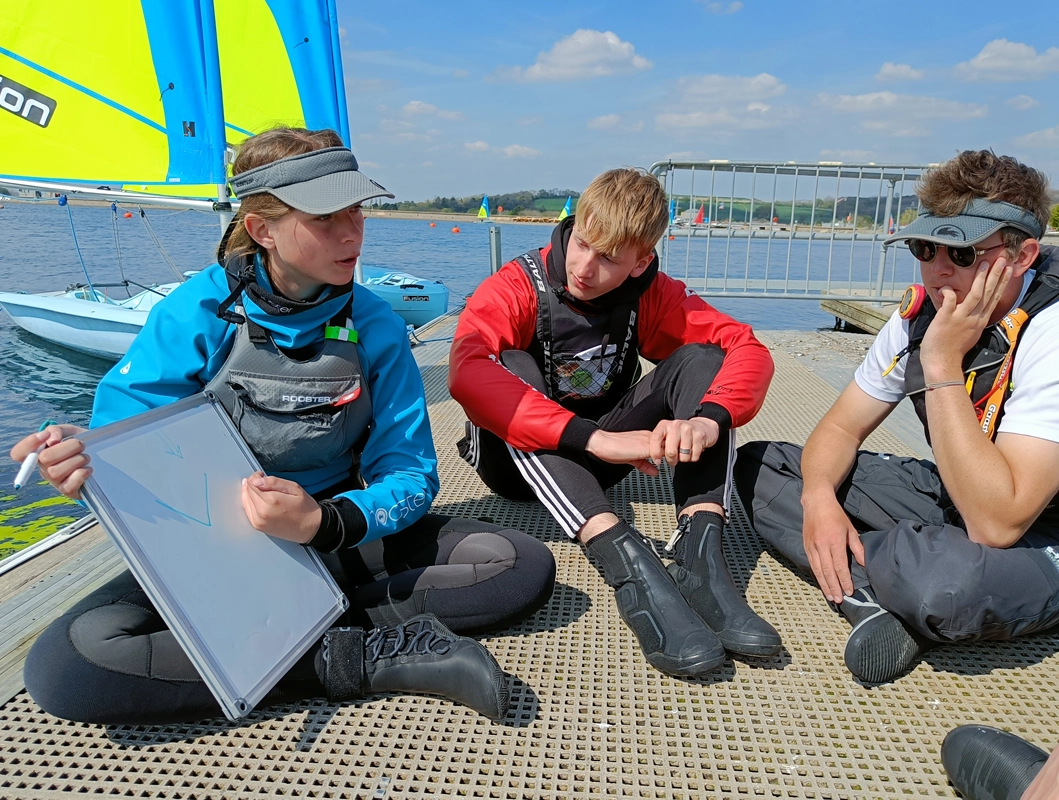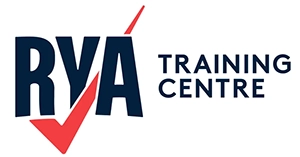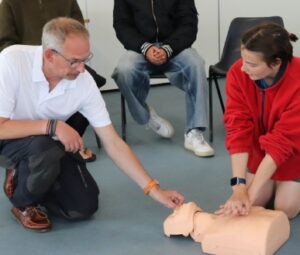Why the Sailing Instructor Assessment Matters
Becoming a qualified sailing instructor is a significant step in any watersports career. The process requires technical skill, the ability to teach clearly, and a strong awareness of safety. Reaching the assessment stage means you have already invested time in training and practice, but the final evaluation can still feel daunting. Careful preparation ensures you approach your sailing instructor assessment with confidence.
Understanding the Sailing Instructor Assessment
The sailing instructor assessment is the final stage of the RYA instructor pathway. Its purpose is to confirm that you are ready to teach safely and effectively within the RYA framework. Assessors evaluate practical sailing ability, teaching skill, and awareness of safety responsibilities.
What the Assessment Covers
- Practical sailing demonstration: Handling a boat in varied conditions with consistency.
- Teaching exercises: Delivering short sessions to show communication skills.
- Safety awareness: Understanding group management, risk assessments, and the use of safety boats.
- Knowledge checks: Covering RYA schemes, lesson planning, and teaching progression.
- Supporting qualifications: Ensuring first aid certification and the RYA Safe and Fun safeguarding course are complete.
The Aim of the Process
The assessment is not designed to catch candidates out. Instead, it checks whether you can apply your training in a structured way. By the end, assessors want to see that you are confident, safe, and capable of supporting new sailors.
Why Preparation Is Essential
Reducing Nerves
Even skilled sailors can feel pressure in an assessment. Preparation helps reduce this by giving you familiarity with the process. When you know what to expect, you can focus on showing your ability rather than worrying about surprises.
Professional Standards
Taking the time to prepare also demonstrates professionalism. It signals to assessors that you treat the role seriously and are ready to take responsibility for students.
Reviewing Your Core Sailing Skills
A strong foundation of practical sailing ability is crucial. Before your assessment, set aside time to refresh essential manoeuvres.
Key Skills to Practise
- Tacking and gybing smoothly.
- Sailing efficiently upwind and downwind.
- Man-overboard recovery drills.
- Launching and landing techniques.
- Rigging and de-rigging a variety of boats.
Preparing for Different Conditions
Where possible, practise in a range of wind and weather. This builds adaptability, which is often more important than perfection. Assessors want to see that you can remain safe and controlled in realistic situations.
Developing Teaching Ability
One of the most important aspects of the sailing instructor assessment is showing that you can teach clearly. Being able to pass on knowledge in a structured and supportive way is at the heart of the instructor role.
Practising Teaching Scenarios
Work with friends or fellow trainees to simulate teaching. Focus on:
- Give clear explanations with simple language.
- Demonstrating techniques as well as describing them.
- Providing balanced feedback, encouraging while correcting mistakes.
- Managing groups so sessions stay organised and safe.
Building Confidence in Communication
Teaching skills improve with practice. The more you deliver short sessions, the more natural it feels on the day of the assessment.
Preparing Your Knowledge Base
Assessors will also check your understanding of theory and RYA frameworks. Reviewing these areas will boost confidence.
Subjects to Refresh
- The RYA National Sailing Scheme and progression routes.
- Lesson planning methods and structuring sessions.
- Local procedures at sailing centres.
- Basic meteorology and navigation.
- Safety boat responsibilities.
Linking Theory and Practice
When revising, connect theory to real examples. For instance, relate meteorology to the effect of gusts on beginner sailors, or link progression routes to how you would support a nervous student.
Checking Supporting Qualifications
Before attending your assessment, confirm that your certificates are valid and up to date. These usually include:
- RYA First Aid.
- RYA Safe and Fun safeguarding training.
- Powerboat qualifications for safety boat work.
Having these complete shows readiness for the full responsibilities of an instructor.
Managing Nerves on the Day
Feeling nervous is natural. What matters is how you manage it.
Practical Strategies
- Arrive early to give yourself time to settle.
- Use steady breathing to stay calm.
- Focus on students rather than yourself during teaching tasks.
- Keep perspective by remembering the aim is to confirm readiness, not demand perfection.
Assessors know candidates feel pressure, and they take this into account.
How OSTT Supports Candidates
OSTT provides a structured pathway to help candidates succeed in their sailing instructor assessment.
Support Offered
- Mock teaching sessions with constructive feedback.
- Refresher training on core sailing and safety skills.
- Knowledge checks to ensure theoretical understanding.
- Mentoring from experienced instructors familiar with the process.
By combining these elements, we help candidates feel prepared, confident, and supported.
Common Challenges and Solutions
Explaining Clearly Under Pressure
Solution: practise in front of peers until group communication feels natural.
Balancing Sailing and Demonstration
Solution: slow down, prioritise safety and control, then add detail once steady.
Remembering Theory Points
Solution: create revision notes and link each point to a practical example.
By anticipating these challenges, you will feel less stressed if they arise in your assessment.
The Benefits of Thorough Preparation
Preparation is not just about passing the assessment. It sets the tone for your future teaching career.
Long-Term Advantages
- Confidence in your first sessions as an instructor.
- Positive responses from students who sense your calm assurance.
- Flexibility to adapt to different teaching conditions.
- Stronger career prospects through professional standards.
Preparation gives you a stronger foundation that supports both your teaching and personal development.
Final Thoughts
The sailing instructor assessment is a milestone, not a barrier. With careful preparation, you can show your ability to sail well, teach effectively, and maintain safety on the water.
OSTT offers pathways and resources that support every step of the journey. From Instructor Courses to Supporting Courses such as First Aid and Safe and Fun, we provide everything you need to succeed.
Prepare with focus, practise consistently, and approach your assessment with confidence. Each step you take now builds the skills and assurance you will need as a future instructor.




